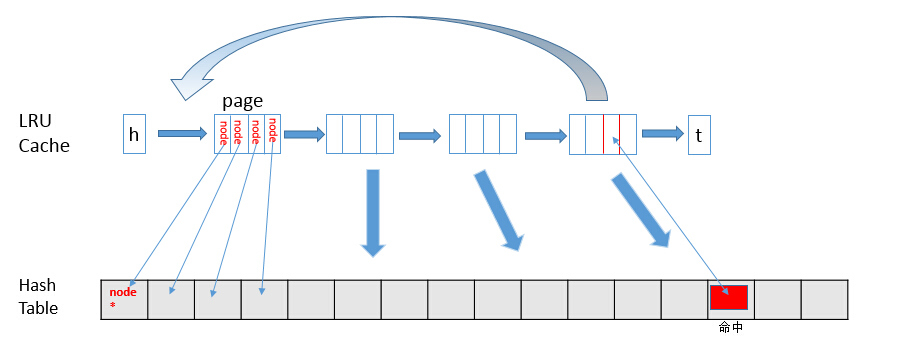一、遵循的策略
LRU是一种数据淘汰算法。LRU(Least recently used,最近最少使用)算法根据数据的历史访问记录来进行淘汰数据,其核心思想是“如果数据最近被访问过,那么将来被访问的几率也更高”。
我们一般使用双向链表+map实现该算法
- 新数据插入到链表头部;
- 每当缓存命中(即缓存数据被访问),则将数据移到链表头部;
- 当链表满的时候,将链表尾部的数据丢弃。
二、实现方式:双向链表+map
Golang代码实现
import "container/list"// LRU结构体type LRUCache struct {capacity intcache map[int]*list.Elementlist *list.List}// key-value 结构体type Pair struct {key intvalue int}// 创建一个LRU对象func NewLRUCache(capacity int) *LRUCache {return &LRUCache{capacity: capacity,list: list.New(),cache: make(map[int]*list.Element),}}// 根据key获取value,没获取到返回-1// 通过map获取元素,获取到后把元素移动到头部func (this *LRUCache) Get(key int) int {if item, ok := this.cache[key]; ok {this.list.MoveToFront(item)return item.Value.(Pair).value}return -1}// 放置一个key-value对// 需要注意容量放满时的情况func (this *LRUCache) Put(key int, value int) {if elem, ok := this.cache[key]; ok {this.list.MoveToFront(elem)elem.Value = Pair{key, value}} else {if this.list.Len() >= this.capacity {delete(this.cache,this.list.Back().Value.(Pair).key)this.list.Remove(this.list.Back())}this.list.PushFront(Pair{key, value})this.cache[key] = this.list.Front()}}
进行测试:
func TestLRU(t *testing.T) {
lruCache := NewLRUCache(3)
lruCache.Put(1, 11)
lruCache.Put(2, 22)
lruCache.Put(3, 33)
lruCache.Put(4, 44)
aa := lruCache.Get(3)
fmt.Println("aa:", aa)
bb := lruCache.Get(4)
fmt.Println("bb", bb)
cc := lruCache.Get(1)
fmt.Println("cc", cc)
}
输出结果:
=== RUN TestLRU
aa: 33
bb 44
cc -1
--- PASS: TestLRU (0.00s)
PASS
Process finished with exit code 0
完整源码地址:github
三、相关应用
0、手机应用使用情况
1、Leetcode刷题
2、Redis缓存替换策略
当 Redis 内存超出物理内存限制时,内存的数据会开始和磁盘产生频繁的交换 (swap)。 交换会让 Redis 的性能急剧下降,对于访问量比较频繁的 Redis 来说,这样龟速的存取效率基本上等于不可用。
在生产环境中我们是不允许 Redis 出现交换行为的,为了限制最大使用内存,Redis 提 供了配置参数 maxmemory 来限制最大可用内存。
当实际内存超出 maxmemory 时,Redis 提供了几种可选策略 (maxmemory-policy) 来让 用户自己决定该如何腾出新的空间以继续提供读写服务。
- noeviction:永不过期,返回错误。这是默认的淘汰策略。
- volatile-lru :只对设置了过期时间的key进行LRU
- volatile-ttl :删除即将过期的
- volatile-random 随机删除即将过期key
- allkeys-lru 对所有的key执行LRU算法(没有设置过期的key也会被淘汰)
- allkeys-random 随机删除key
3、开源:golang-lru
可以参考该框架的simplelru中的相关代码进行理解,代码量不多,基本上和我们写的Golang代码实现差不多。
参考资料



